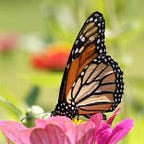Braiding Sweetgrass Discussion Questions
This October, we shared Braiding Sweetgrass: Indigenous Wisdom, Scientific Knowledge and the Teachings of Plants by Robin Wall Kimmerer as our quarterly selection. We have written a list of discussion questions for you to think through as you read along with us and will be talking about a few of these questions in depth on our upcoming Book Discussion via Zoom on Tuesday, November 16th at 3 PM ET. Feel free to also use these questions as a springboard for discussions with your friends, colleagues, or local book club.
- “Plants tell their stories not by what they say, but by what they do.” What was your favorite plant story in Braiding Sweetgrass and what lesson did you learn from it?
- Is there a plant like the fragrant “wiingashk” that is as special to you or holds value for you? Why?
- Throughout Braiding Sweetgrass, Kimmerer writes about how her experiences in traditional academic settings has been influenced by her knowledge and Potawatomi heritage. Have you had similar experiences where your background and way of seeing the world clashes with the mainstream way of seeing and thinking?
- “The more something is shared, the greater the value,” Kimmerer believes. Reciprocity is heavily mentioned in the book, exchanging things with others or nature for mutual benefit. In what ways can we incorporate gift economy in our jobs or personal lives? How would this practice shift our thinking?
- Kimmerer challenges us to see a more positive relationship between people and the environment, like the generosity of geese or the gift of strawberries or pecans that nourished her and her family in time of need. We can shift our focus on the negative impacts of people on the land like “brownfields, factory farms, suburban sprawl” to opportunities for reciprocity and renewal. What is your knowledge of positive interactions between people and land?
- Scientific knowledge and indigenous ways of knowing are complimentary, just like goldenrod and New England asters, do you think there’s a need for objectivity (science) and subjectivity to mesh together for there to be a fuller appreciation of plants, animals and the natural world?
- In “The Grammar of Animacy,” Kimmerer posits that the word It “robs a person of selfhood and kinship, reducing a person to a mere thing.” What would change if the English language reflected the animacy of plants and animals?
- In “A Mother’s Work,” Kimmerer writes of restoring the pond on her land for her daughters by clearing out algae, and along with it many small invertebrates- “..I bargained with myself over the chain of responsibility and tried to convince myself their demise served a greater good.” What responsibility do we have in restoring a habitat?
- The Three Sisters, corn, beans and squash grow and flourish together in harmony and the “gifts of each are more fully expressed when they are nurtured together rather than alone.” How can we combine our individual strengths to build community and reciprocal relationships?
- How can people living in less proximity to nature practice concepts that Kimmerer introduces like the Honorable Harvest or reciprocity? What might you incorporate into your life?
- In “Burning Cascade Head,” Kimmerer writes that science can be a path to kinship and act of reciprocity, and that none of the ecologists she knows entered the field “for the love of data or for the wonder of a p-value” but rather, they are heart-driven. Have you found this to be true?
- In “People of Corn, People of Light,” Kimmerer writes about the chasm between Western science and “ecological compassion” and her dream of a world where “revelations of science” are “framed with an Indigenous worldview- stories in which matter and spirit are both given voice.” Do you think this is possible, and how could it come about?
Brought to you by the USFWS Library, America’s Wild Read is a virtual book club where we aim to inspire you to connect with the outdoors and nature through literature. We hope you will read along with us as we feature various conservation books every quarter — contemporary, traditional, new, and classic.
